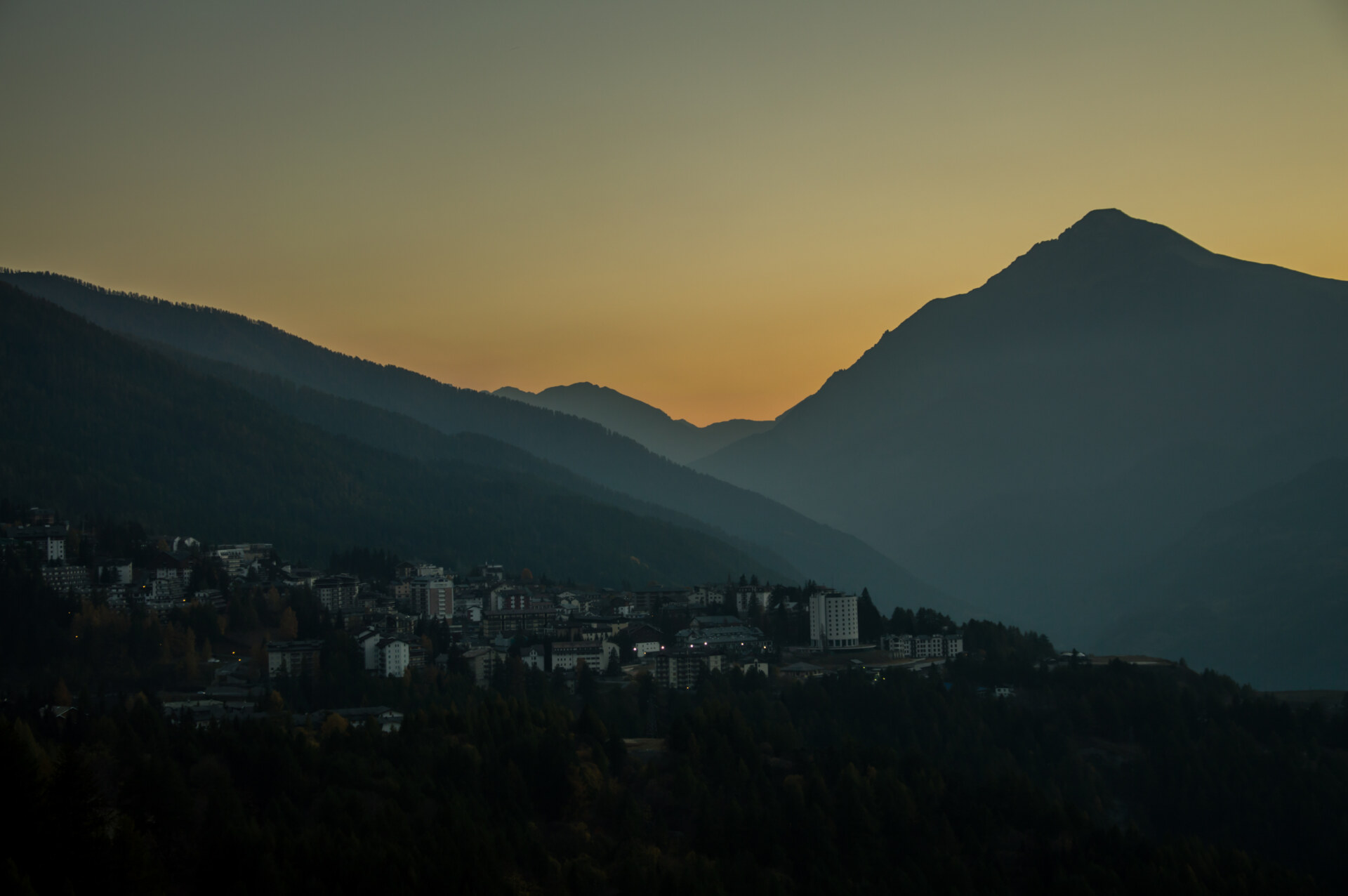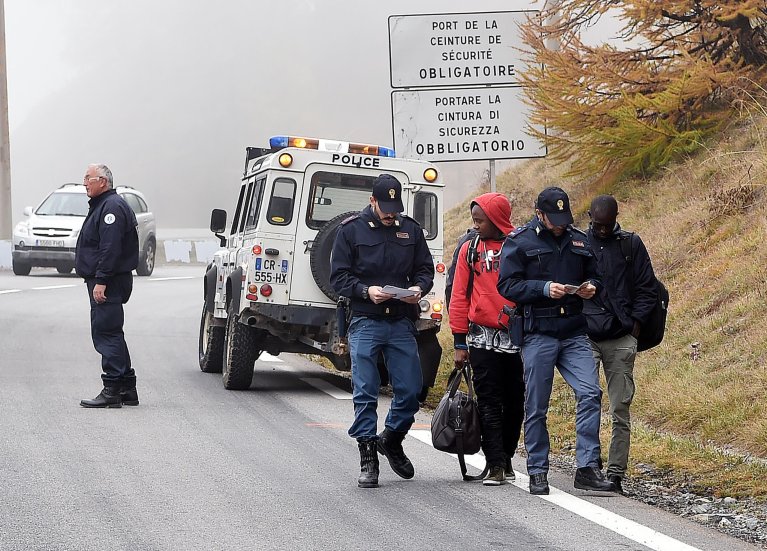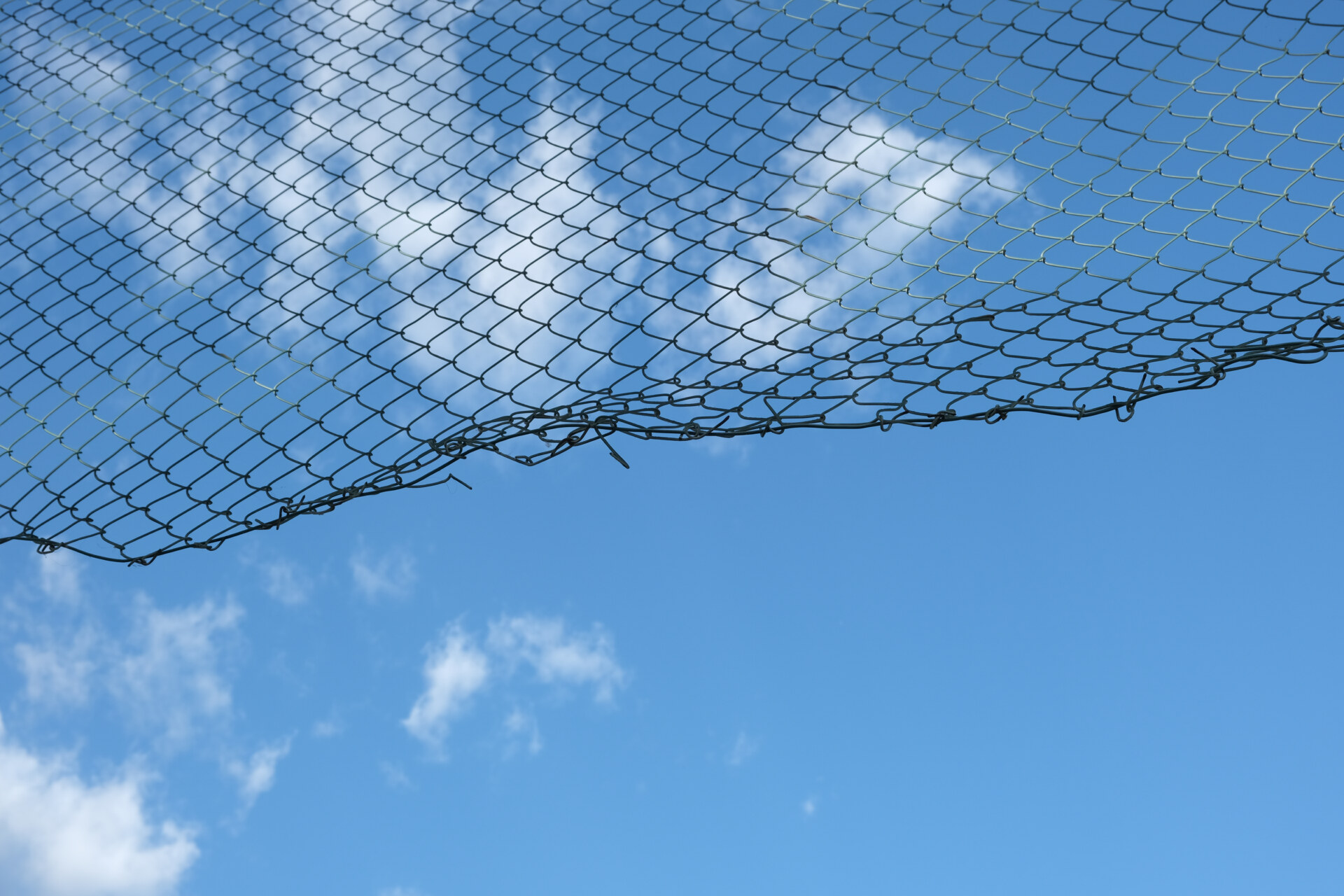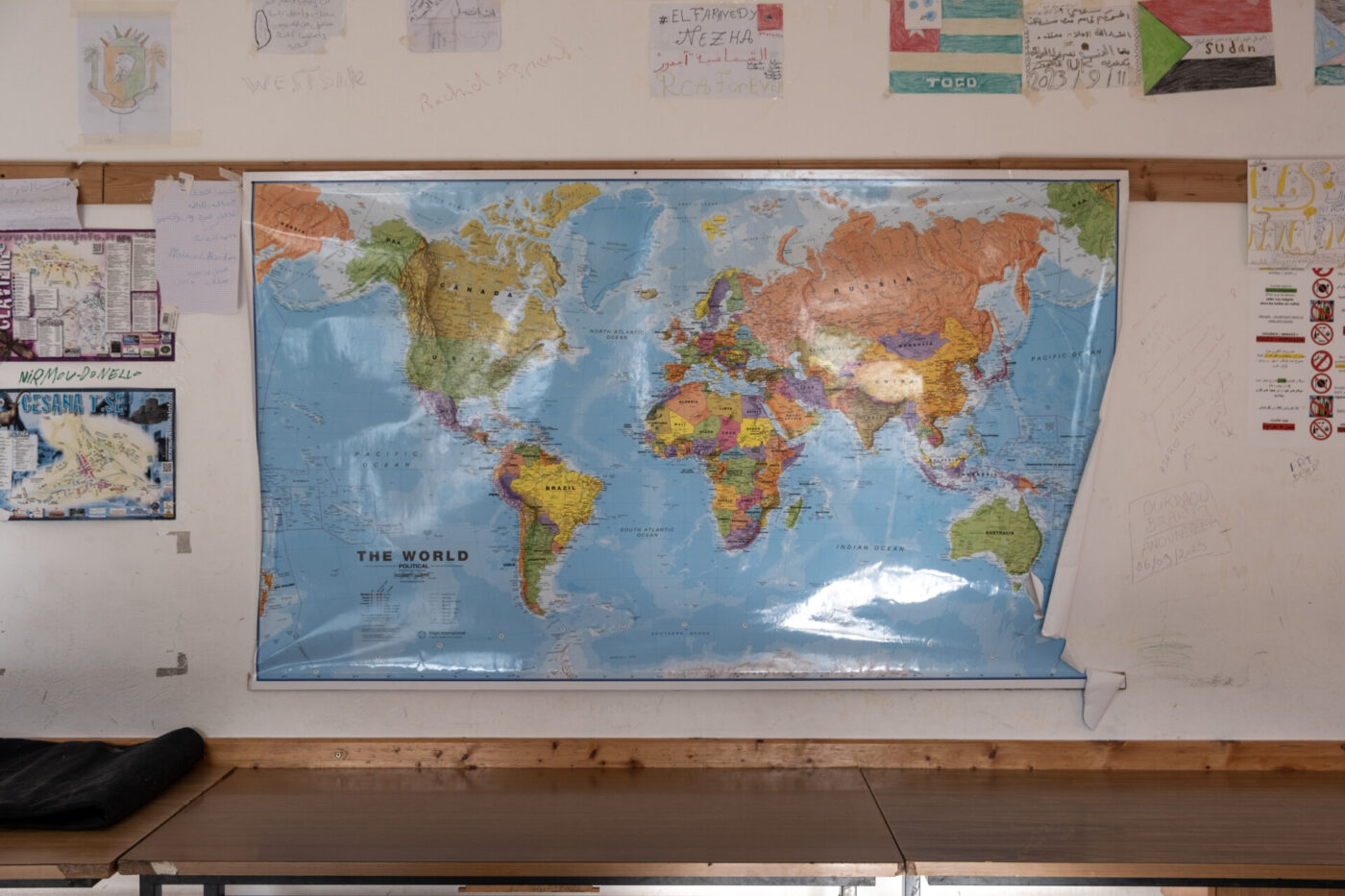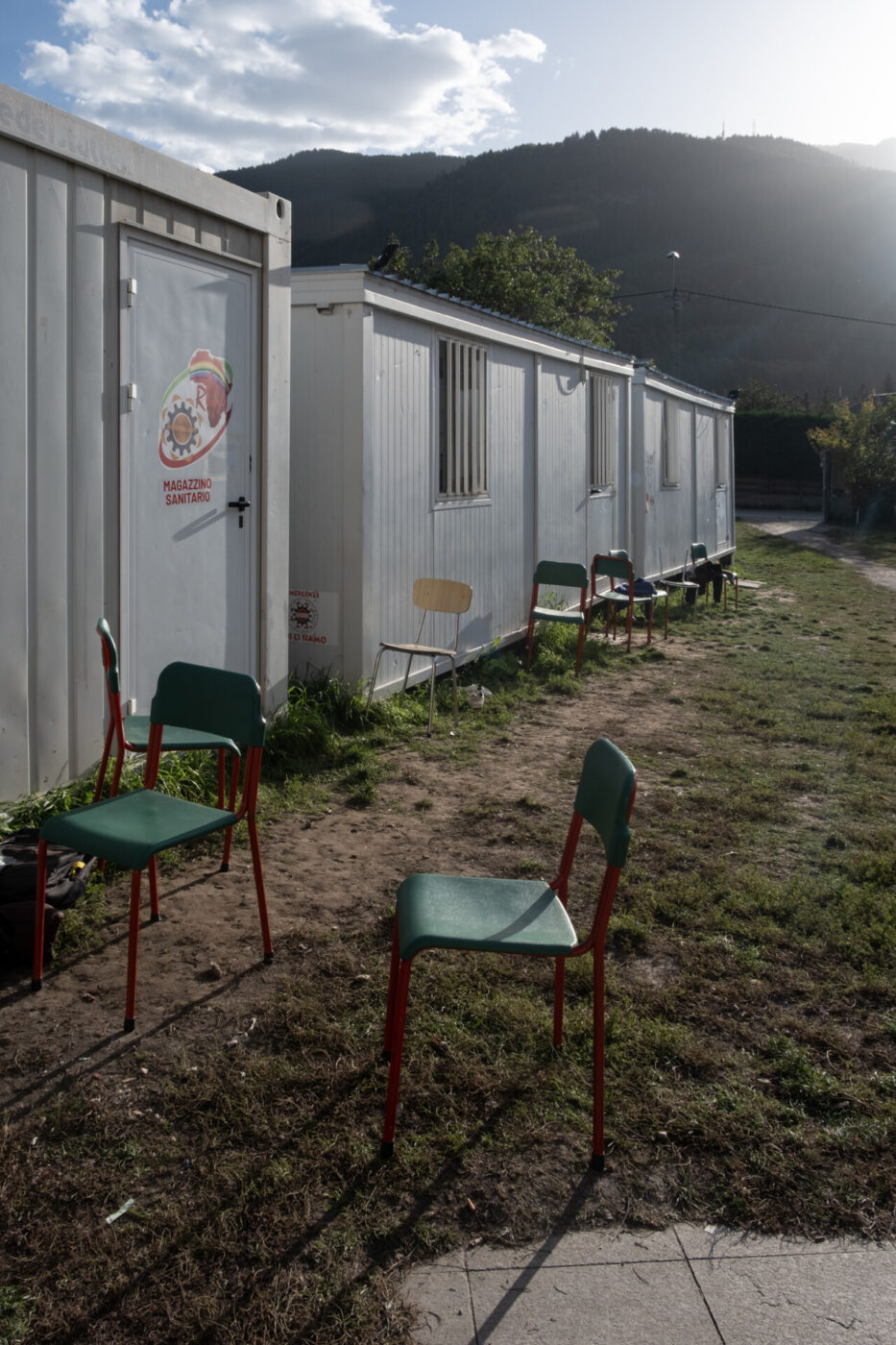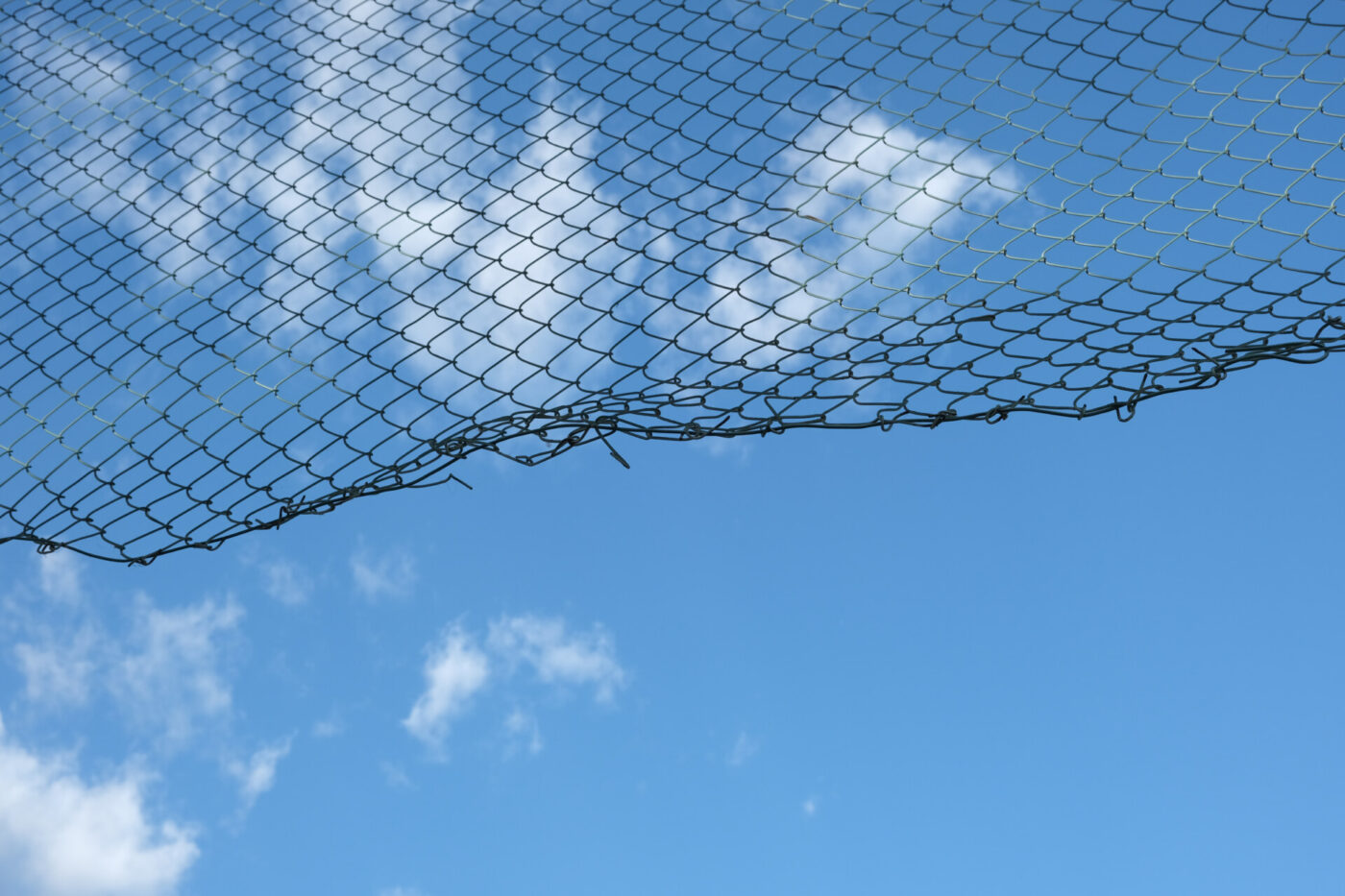“The first volunteers say it all started in 2017,” Daniela begins to recall. We’re sitting in a café in front of the train station in Oulx, a provincial town of little more than 3,000 residents in the mountains of Piedmont–the very north of the country, close to the French border, and a stop in the long journey for migrants looking for a better life in northern Europe.
It’s a sunny day in early October, and the air is fresh. The Alps, strong and snow-capped, dotted with little villages, are a sight to behold. It’s one of those days that feels like nothing wrong could ever happen; it all quietly screams perfection. But I know reality couldn’t be further from this impression.
Daniela’s short, light hair is shining in the sun. “It had snowed a lot that winter,” she continues, “the snow was deep and the avalanche risk was high.”
Italy was in the middle of what the government at the time was calling the “migrant crisis”. In February, the country had signed a Memorandum with Libya, through which Italy provided financial and technical support to Libyan authorities in exchange for border clamp downs–one that, according to Doctors Without Borders, lead to an increase in “violences, tortures, abuses and arbitrary detentions” against migrants, what the Prosecutor of the International Criminal Court (ICC) has publicly stated “may constitute crimes against humanity and war crimes.” Though migrant numbers significantly dropped (by up to 87%) and countless officials and organizations called for Italy to suspend assistance (among them, the UN Secretary-General and Council of Europe’s Commissioner for Human Rights), the Italian government kept up with, and has continued to keep up with, its xenophobic rhetoric to justify closed-borders policies.
Given these policies, Italy’s difficult socio-economic situation, and high unemployment numbers, new underground routes opened, leading migrants to France and the more prosperous countries of northern Europe, more attractive locales for starting a new life. These routes, most often, still cut through Italy, either via the Balkan route to Trieste or Lampedusa. From there, migrants reached the mountains in the northeast of Italy in order to cross the border to France.
“Migrants began arriving at the station in Bardonecchia, on their way to try to cross the border with France from Colle della Scala,” a very dangerous pass just close by, Daniela recounts. “They arrived wearing jeans and sweatshirts,” she says, continuing that this is still the case. “It’s incredibly dangerous to cross in those conditions.”
At the time, there were no auxiliary institutions in place to provide help or resources, no aid to even meet the most basic of needs. Migrants were left to fend for themselves. But locals in Bardonecchia saw the situation and couldn’t stand by idly; civil society began to organize and fill these humanitarian gaps.
“There was a spontaneous initiative of solidarity and help from the local community, which began with bringing basins of hot water to the waiting room of the Bardonecchia station, to warm frozen hands and feet,” Daniela explains. And others followed suit: more and more people showed up, wanting to contribute, and volunteers quickly began to organize themselves. Doctor Paolo Narcisi, now president of Rainbow for Africa, “was involved in the initiative, an old camper was found, and a garrison was held at night to provide first aid. In the camper there was always a doctor or a nurse, as well as a volunteer.”
Though most migrants do not want to remain in Italy, the 1990 Dublin Treaty, active from 1997, requires that refugees apply for asylum in the first country of arrival, which is often Italy; this means that most are forced to cross borders illegally.
The path migrants follow is at least 25 kilometers long, in open mountains with cliff drops, reaching an altitude of 2,000 meters. Most are not used to mountains like the Alps, especially in the winter, when temperatures drop as low as -10℃. On top of that, the French Gendarmerie is constantly on the watch, recently using drones to carry out pushbacks, systematically ignoring resolutions by the EU. Back in early November, Youssef, a young migrant who was running from the French police, died from falling from the Pont d’Asfeld and drowning in a river called La Durance, a mere 14 kilometers from the border–and this is just the most recent of many cases. One of the most worrying aspects is how all of this happens in silence, while most people and media look the other way. Thousands of people pass through our communities–5,295 people have come through Oulx from May to August, 2023 alone–risking their lives, every single day, without most of us ever knowing or noticing.

The people I meet in Oulx are mostly from sub-Saharan Africa and the Middle East. There are Afghans, Iranian, Ivorians, Guineans, Sundaneses, and South-Sudaneses, among others–all got here by crossing the Mediterranean by boat or by going through one of the Balkan routes. Most of them endured various kinds of tortures, pushbacks, and detentions. They are no less determined to try and make a different life for themselves; some want to reach France, but most are trying to arrive in northern Europe. People on the move arrive here in Oulx because it has become the most logical area from which to try and cross the border to France.
From Oulx, they can catch local buses to towns closer to the border, from where they have to proceed on foot–a path much less dangerous than the mountainous Colle della Scala. I talk to one of the drivers, in his fifties, originally from Albania: “I was lucky,” he says, “to come here, I didn’t have to spend days on a boat with no water. I was not pushed back, nor did I have to risk my life to cross borders. When I look at them, I feel like crying, this is all so unfair.” The only alternative route would be Ventimiglia, but the border is heavily guarded. The hope, by coming here, is that forests and mountains can provide some kind of shield from the French drones and police patrols.
In October, 2018, Daniela tells me, they opened the first refuge in Oulx, called Rifugio Fraternità Massi–an initiative taken up by a local clergyman, Father Luigi Chiampo. In an increasing number of places in Italy, given the lack of intervention by the state, the church is stepping up, offering what they can to provide migrants with at least some basic help. Once again, despite more and more people sleeping at the station and the evident dangers of attempting to cross the mountain without proper equipment or preparation, state institutions were absent.
The first refuge was made of a single dormitory with cots and bunk beds, a model-house inside a container for families, and a couple of rooms for single women at risk, for a total of about 35 to 40 beds. Toilets were in two outdoor containers in the courtyard, and there was a small six-seater kitchen. In 2021, always relying on the determination of the local civilian population to help, a new shelter, the one I am now visiting, was opened.
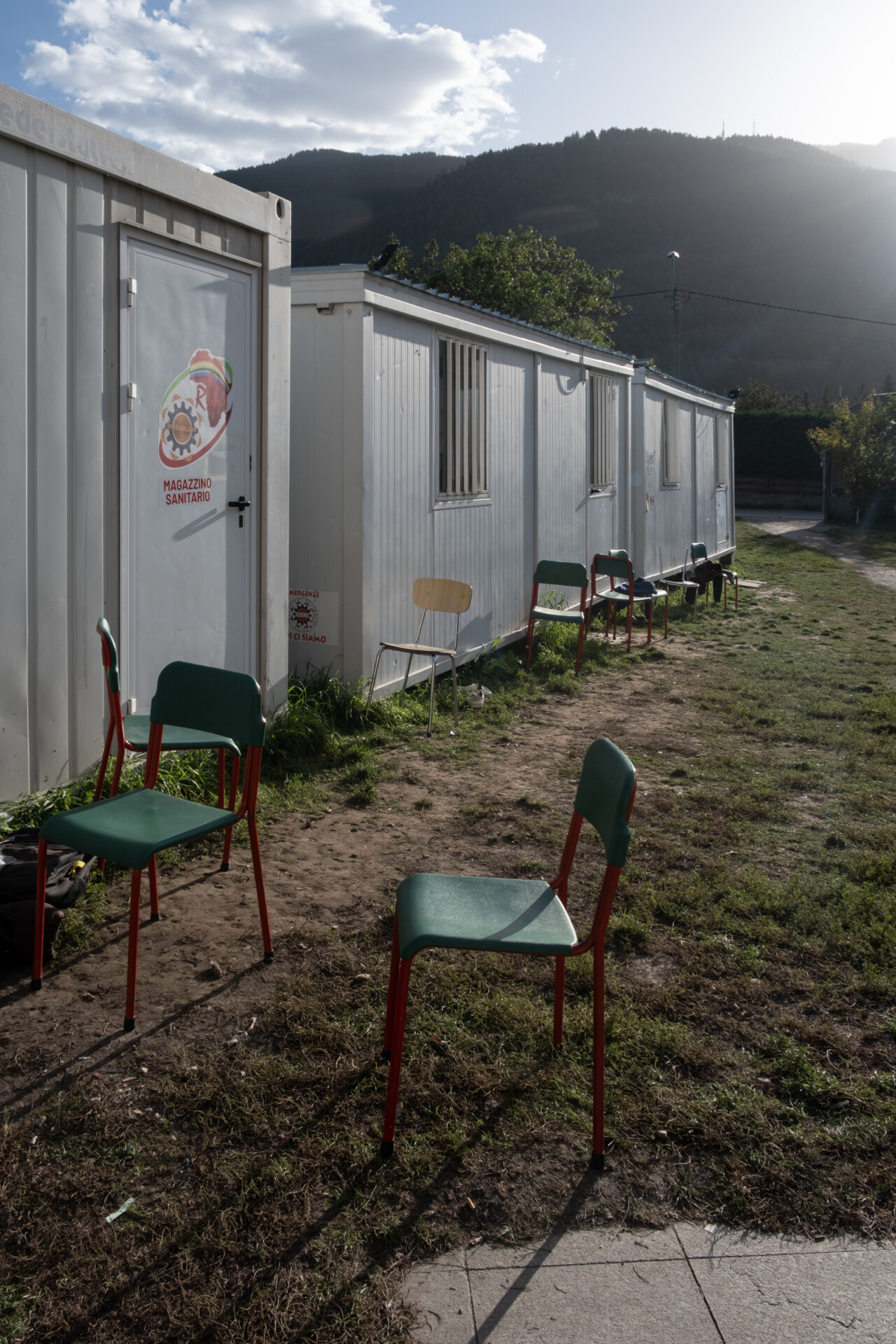
Daily operations range from distributing adequate clothes for the mountains (again, collected via spontaneous donations alone) to preparing and serving food, offering some basic legal and logistic information, and providing primary medical care and a place to sleep for those who decide to stop and rest for a night. Volunteers and operators take turns so that 24 hours a day, seven days a week are covered.
People who are on the move hardly ever spend more than a couple of days at the shelters. Even so, the numbers the shelter is faced with remain worrying: during my week-long stay, presences never fall below 150. For a few years, there was a twin-shelter, across the border, run by members of the French civil society–the first touchpoint in French territory, where they provided civil clothes and gathered mountain ones, offered food and beds. Due to lack of funding and staff, it was shut down in 2023.
Oulx volunteer Elena–a strong, precise, and orderly woman–manages clothes donations. With her, I enter a room with what seems like endless bags of clothes, but she explains that it’s hardly enough: “Here we keep the winter jackets. I know it gets down to seven degrees at night now, but we can’t distribute them yet. You always have to plan ahead and ask yourself ‘if you give these out now, what will we give out when it reaches sub-zero temperatures?’ What may feel cruel now could save a life two months from now.” At lunch, I talk to Martina, an operator originally from Veneto and an Anthropology post-grad student. She’s worried about the current situation; in the past few weeks, it’s the worst they’ve ever seen. “Following the memorandum Italy and the EU signed with Tunisia this past summer [similar to the one signed with Libya in 2017, this one financing the Tunisian coast guard to prevent people from leaving in exchange for funds], there has been a dramatic increase in the departures from the Tunisian coasts,” she tells me. Police violence has increased too, and there have been reports of the Tunisian authorities deporting people–as of July, 2023, over 4,000, according to The Guardian–against their will to the remote desert at Libya’s border with Algeria. “At the same time, the Italian system is pushing people to go away. The combination of these factors is resulting in a fast and worrying rise in people getting here. Most arrived either in Lampedusa or Trieste less than a month ago,” Martina says.
In the late afternoon, when departures are over for the day, I get to spend some time with the people who’ve just arrived. I meet Lamin. He’s been living in Rome for seven years and speaks perfect Italian. He’s here taking his brother, a minor, who wants to reach their sister in France. Hamad is here with his family; they’re from Iran. After attempting to cross yesterday, they’ve been violently pushed back. Part of the family decided to go back to Turin and apply for asylum here in Italy. Peter left Sudan in 2013; he was imprisoned in Libya, but managed to escape and reach Lampedusa. His wife is waiting for him in France, but he’s also been pushed back. Joy is from Guinea; she has an infant on her back. Volunteers are concerned about the length and difficulty of the way she has to go, but she is determined: “I have been through 11 different countries. I can walk; I won’t stop here.”
––
What I witness in Oulx is a powerful testament to the strength of local community. The people that have come here to help have decided not to look the other way; they’ve come to form a new community, one that thinks a different world is possible and that accepts and facilitates the freedom of movement for all. They certainly practice what they preach–even though, they tell me, it often feels like trying to stop an avalanche with bare hands.
